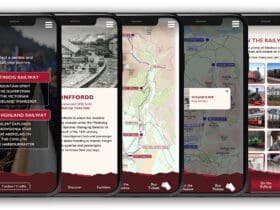The digital era allows us to perform multiple actions remotely. In the case of education, students can learn wherever it is convenient to study, for example, at home or in a park, without an actual presence at the university. The lecturers are also very busy, and an online class provides them with many scenarios for how to organize a class. But what about the exams? Is it possible to hold them online securely? Is it possible to prevent violations and cheating during online sessions?
It is a complicated task for many universities because traditional proctoring is evolving, and it needs new methods. But luckily, there are services like ProctorEdu live proctoring exam that can help you monitor students during their examinations. Let’s find out more about proctoring and its types and benefits.
Online Monitoring and How It Works
The service aims to detect any untoward behavior during the test session that might indicate that a student is cheating. The software includes AI technology that can scan the test taker’s location and biometric parameters and read facial expressions. Observation is conducted from three sources: audio, video streaming and desktop screen recording. When a test-taker tries to open another tab in the browser or peep / listen to a hint, the system automatically flags the violation and sends this information to the examiner.
The progress of proctoring is monitored by a specially trained person who watches whether the system has made a mistake. That is the one we call the proctor. The system works equally well with both individual users and a large number of people. All that is required for verification is a stable Internet connection and a computer or laptop with a webcam and microphone. Test-takers do not need to install special software. All they have to do is to start the examination session.
Online Proctoring and Its Types
When we talk about online monitoring, various platforms can offer several options for proctoring, like:
- Synchronous. Universities commonly use it in written exams. In conjunction with AI, a specially trained person, a proctor, observes the user in real-time. They carry out personal identification, monitor compliance with all procedures and comment on the examinee’s actions in a chat.
Before allowing a student to take an exam, the proctor must also ensure that the student does not have any prohibited materials or devices. As practice shows, this immediately weeds out most of the “cheaters” and makes it clear to students that the observers are serious.
- Recorded. The software provides personal identification and monitors the entire course of the exam. Artificial intelligence automatically observes some prohibited actions.
- Automated monitoring. This is like the recorded variety, but the difference is that it almost entirely takes place without human intervention. The results are provided to the customer as a report upload from the system. It contains the name of the test-taker, the personal data to log in to the system, the date and time of testing, the name of the exam, the status of the test and the type of violation. Based on the report, the teacher decides whether to credit the student with the test result.
Some Reasons to Use Online Monitoring
Online proctoring allows different institutions and educational facilities to perform more accurate observations during evaluation tests and exams. In addition, it helps reduce the number of cheating incidents and speeds up the process because, with AI technology, a teacher can observe more people at once.
Other significant perks of online monitoring are as follows:
- It gives flexibility in choosing the date and time of the exam.
- The software provides the opportunity to take the test anywhere in the world.
- Calm environment. Home or other familiar environments help students to focus on exams.
- Proctored systems involve taking the exam using a keyboard rather than handwriting. It is time-consuming and can cause misunderstandings.
- Safety. It is impossible to get ill through the Internet, especially during the Covid-19 pandemic.
- Get results fast.
Another vital benefit is that after analyzing the students’ behavior, the teacher can adjust the form of presentation of the material and change the learning approach for future study.
How to Choose a Monitoring Service
Today you can find many great companies that can supply you with their innovations. However, to select the one suitable for your purposes, pay attention to the following factors:
- Check the type of exams the software can monitor: oral or written.
- See if it offers integrated communication between the proctors and students.
- Find out if it can carry out 360 scans of the student’s location.
- Observe if it has an automated scoring system.
- Check if you can integrate the software into your testing system.
A properly selected platform can make monitoring easier and sufficiently save time. First, you need to determine the aim of the examination and select the service accordingly. ProctorEdu meets all the requirements and corresponds to the needs of modern exams. Test out the trial version to learn more about it!








Leave a Reply
View Comments